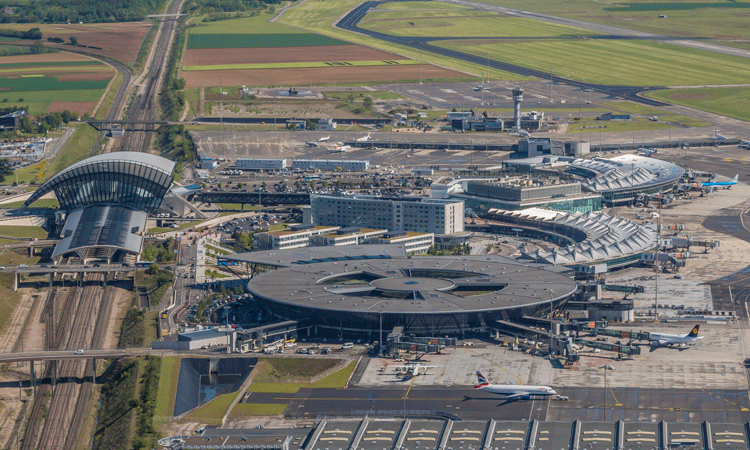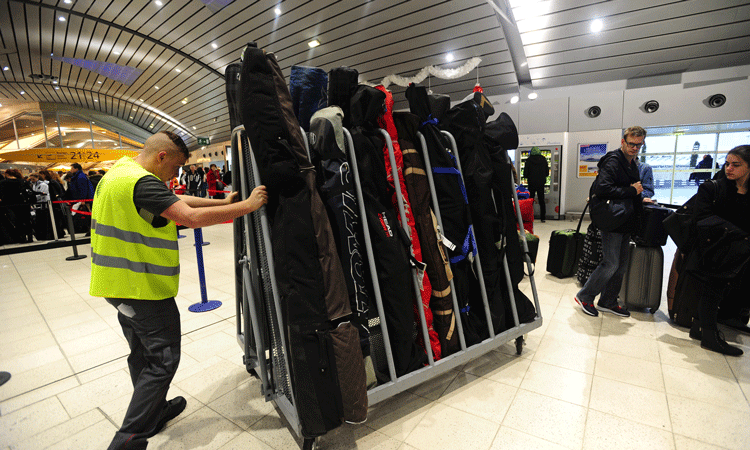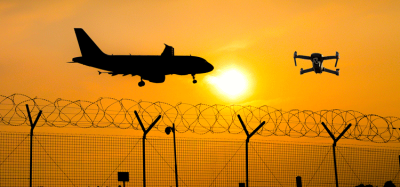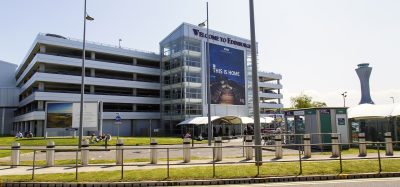Winter operations are an Olympic sport for Lyon‑Saint Exupéry Aéroport
Posted: 10 January 2025 | Lyon-Saint Exupéry Aéroport | No comments yet
Lyon-Saint Exupéry Aéroport, explains how technology is permeating through data, equipment, communications and safety to ensure operational efficiency throughout the unpredictable winter season.


What are the key components of your winter operations plan, and how do you ensure it is effectively implemented?
VINCI Airports is managing four airports serving the French Alps and addressing the ski market: Lyon-Saint Exupéry, Grenoble Alpes Isère, Chambéry Savoie Mont Blanc and Annecy Haute-Savoie Mont-Blanc (Annecy is dedicated to general and business aviation).
Each winter, particularly on weekends, Lyon-Saint Exupéry Airport, Grenoble Airport and Chambéry Airport welcome travellers from many countries like Canada, the United Kingdom and Ireland, Norway, Poland Denmark, Sweden, Belgium, Bulgaria, Lithuania, Netherlands, all arriving to experience the region’s renowned ski resorts. This trend is expected to grow with the upcoming 2030 Winter Olympic Games, which are set to take place in the French Alps.
VINCI Airports’ teams are mobilised to prepare for the winter season, as each year, with all of our stakeholders involved
VINCI Airports’ teams are mobilised to prepare for the winter season, as each year, with all of our stakeholders involved: airlines first and foremost, ground handling companies, tour operators and also French state partners. All our airports serving the Alps have established market complementarity and an operational co-ordination process in case of any weather or operational difficulties. This co-ordinated organisation of VINCI Airports’ network in the Auvergne Rhône Alpes region is a real advantage for airlines and tour operators.
How do you manage snow and ice removal on runways, taxiways and aprons to maintain operational efficiency and safety?
In the four airports powered by VINCI Airports in the region, vehicles for ice and snow treatment using de-icing and anti-icing liquids (less harmful and less carbon-intensive) help us maintain 24/7 operations according to the schedule. For instance, Lyon airport has a fleet of 15 snow removal trucks to ensure compliance of the runways, taxiways and aprons.
We have implemented a winter operational guide, updated each year, which precisely describes why, when and how to trigger the snow removal/treatment plan in case of winter weather event.
We have implemented a winter operational guide, updated each year, which precisely describes why, when and how to trigger the snow removal/treatment plan in case of winter weather event. As well as on-call teams that can be mobilised to ensure air traffic consistency.
During winter operations, the daily analysis of meteorological data is primarily monitored: temperature, humidity, wind and precipitation. These data are provided by airports’ weather stations.
At Lyon airport, the Operational Control Centre (OCC) works in close co-ordination with air traffic control (ATC) for decision-making regarding actions to be taken based on each situation. This includes determining whether preventive treatment is sufficient, whether to activate on-call teams, and which areas need to be treated.


c: Lyon-Saint Exupéry Airport
What types of de-icing equipment and technologies do you use for both aircraft and airport surfaces, and how do you ensure their effectiveness?
VINCI Airports is responsible for airport surfaces: landside and airside. Aircraft are de-iced by the airlines or their handling companies (which in Grenoble, Chambery and Annecy is VINCI Airports).
Different types of treatment can be implemented depending on weather conditions: anti-icing products can protect aircrafts for up to 1.5 hours, and in very cold weather with snowfall, the product may only be effective for a maximum of 20 minutes before take-off. This can vary significantly.
VINCI Airports teams check the quality of the treatment on-site, and the ATC collects feedback from pilots to ensure that runway conditions are compliant. All the products used meet current environmental standards (Potassium Formate).
Can you describe your communication strategies with airlines, ground handlers and passengers during severe winter weather conditions?
VINCI Airports keeps the airlines and passengers updated through multiple channels. We are developing very close links with our stakeholders (ATC, airlines, handlers, border controls, catering services, cleaning services…) to ensure the most effective transmission of information.
For two years, Lyon airport has set up its own application to share traffic information and update it in real time with all stakeholders.
Communicating the latest information to passengers is paramount, through our terminal display screens, website and social media channels.


c: Lyon-Saint Exupéry Airport
What measures do you take to ensure the safety and wellbeing of airport staff working in harsh winter conditions?
In case of harsh winter conditions, staff schedules are adapted to the weather forecast in order to provide all needed services.
On-call teams have compulsory rest periods between shifts and cannot work beyond a certain number of hours. These teams are equipped with specific protective equipment for working in the cold and receive annual training on tasks related to winter operations.
Dedicated rooms are available where nightshift staff can have a rest.
How do you balance maintaining flight schedules with ensuring safety during unpredictable winter weather events?
Safety is always the top priority. No aircraft movement is allowed until ATC ensures the compliance of the runways.
VINCI Airports works closely with all the stakeholders (handling companies, border police and other companies involved) to confirm the flights scheduled follow the plan for all the teams to deliver a high level of services, whether disruptions occur.


What innovations or new technologies have you adopted in recent years to improve your winter operations?
Weather data is increasingly accurate, and it is possible to anticipate reliable information. Lyon Airport has acquired a vehicle equipped with onboard sensors to provide weather measurements in addition to those from the weather station.
How do you evaluate and improve your winter operations plan annually to address any challenges or inefficiencies experienced in previous seasons?
VINCI Airports constantly work on cross‑functional projects with the following three‑step approach:
- Staff planning
- Involving technology to ensure the operations be stable and consistent
- Real-time communications with partners and providing flight information to passengers.
The assessment of the operations effectiveness and the reflection on possible areas of improvement lead to a yearly meeting held at the end of the season gathering all stakeholders. These inputs are considered and incorporated into the operational guide for the following winter season.
With the changing climate (storms, extreme heat and winds etc.), have you seen your weather changing and how are you adapting your operations to suit this?
VINCI Airports is constantly monitoring the weather changing patterns and plans the operations accordingly. Sustainability being one of the most important challenges nowadays, we are having several ongoing projects to bring Lyon Airport to net zero emissions by 2026 and to further being one of the leading airports worldwide on being sustainably innovative. The three other alpine airports are planned to reach net zero emissions by 2030 as all the VINCI Airports’ European airports.
Join our free webinar: Beyond silos: How ecosystem thinking elevates the airport experience
In today’s complex aviation landscape, airports are moving beyond siloed operations to embrace a new era of collaboration. This webinar focuses on how leading airports are using ecosystem thinking to adapt, personalize, and continuously improve every touchpoint, boosting both passenger satisfaction and non-aeronautical revenue.
Date: 13 Nov | Time: 10:00 GMT
REGISTER NOW TO SECURE YOUR SPOT
Can’t attend live? No worries – register to receive the recording post-event.
Issue
Related topics
Communication Technology, Data, New technologies, Operational efficiency, Passenger experience and seamless travel, Safety, Winter operations, Workforce
Related airports
Lyon Saint-Exupéry Airport (LYS), Lyon-Saint Exupéry Aéroport


















